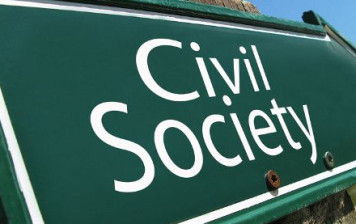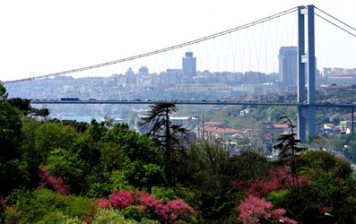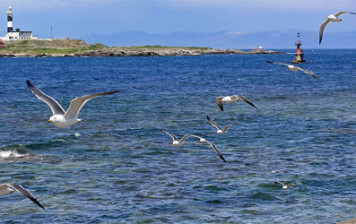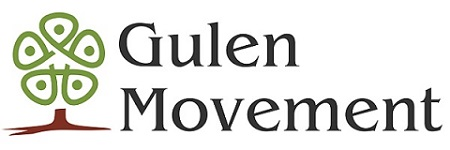
Gokhan Bacik and Umit Kurt
The significance of the Gulen Movement that has attracted the most scholarly attention is its development of certain networks that transcend national boundaries (West 2006, 284). More critical than its global presence as an institution is the Movement’s capacity to recognise local actors in extra-national contexts. The Movement is not chary of expanding its societal basis. Rather, it sees enlargement as a major networking strategy (Ozipek 2010). ‘Recruitment’ is not the adequate term for characterising the link between a social movement and people, for participation in such a movement takes place in various ways (Ebaugh 2009). (Creating alternative forms of participation is a serious indicator of the societal capacity of a social movement.)
How a movement activates the large masses beyond the recruited circle is also a vital area of study. The Gulen Movement is not recruitment based; rather, it lives freely with the unclear boundaries between itself and the relevant segments of any society. For example, in Madagascar, we observed that families are active parts of the Gulen schools’ administration. As local agents, they appropriate the mission of fulfilling certain official undertakings. Even the persuasion of other local people is to a large extent the work of these local participants. There is almost no boundary between the functionaries of the Movement (i.e. teachers and others sent from Turkey) and the local people. Similarly, the functionaries of the Movement are very disposed to learn about and participate in the local culture (Esposito and Yılmaz 2010). They accept the existing culture as it is and promote intercultural marriages .(1) In the end, the Movement’s activities become a complex process of trans-national interventions.
Bayram Balcı gives an account of how this transnational chain is created in the case of Tashkent, a Central Asian city. This account carefully inspects the Movement’s ability to form trans-national bonds:
Businessmen from a particular city in Turkey, for example Bursa, will decide to concentrate their efforts on a particular Central Asian city, for example Tashkent. Nurcu [the Gulen movement] (2) investment will then become important in Tashkent, and a kind of twinning between the two cities results. Nurcu group members are sent by the movement with the aim of making contact with important companies, bureaucrats and personalities in order to appraise local needs. They then invite some of these important personalities to Turkey. Some vakıf [foundation] and other Nurcu organizations receive them and show them the private schools and foundations of the cemaat [the Gulen community], without ever mentioning this word. Thanks to these contacts it then becomes easy to prepare the work in Central Asia. The network of important personalities established in Central Asia has been crucial for the community. With their help, the cemaat has been able to overcome the bureaucratic obstacles encountered by every foreigner working to invest there. After their arrival in each country, thanks to their contacts, the representatives of the cemaat are given permission to take over an old school and to transform it. The new school will remain under the control of the state, which helps to maintain it, paying for such things as gas, water and electricity. All the other expenses, for books, tables, computers, laboratories and so on, are met by the Turkish companies. (Balcı 2003, 154–5)
Balcı’s model typifies how the Movement leads its followers to aim for the trans-national goal. But the Movement has a variety of strategies beyond the ones he has observed. Balcı can be faulted for missing the societal aspect and for failing to note that the role of ‘important personalities’ may not be as critical in the less authoritarian countries as he deems. These concerns notwithstanding, Balcı gives a successful account of how the Movement acts in the complex process in which its trans-national interventions take effect. This process has demanding phases, such as the persuasion of people in Turkey to spend their money abroad, the persuasion of teachers to work abroad, the persuasion of the local (outside Turkey) people and the creation of effective structures of interaction through which the essentials of legitimacy and information are transmitted.
Source:
New Islamic movements and amodern networks. Culture and Religion, Vol. 12, No. 1, March 2011, pages: 21–37.
Notes, references:
(1) Interview with Jenny Rajaoerison, 14 February 2010, Antananarivo, Madagascar.
Balcı, Bayram. 2003. Fethullah Gulen’s missionary schools in central Asia and their role in the spreading of Turkism and Islamism. Religion, State and Society 31, no. 2: 151 – 77.
Ebaugh, Rose H. 2009. The Gulen Movement: A sociological analysis of a civic movement rooted in Moderate Islam. 1st ed. New York: Springer.
Esposito, John L., and Ihsan Yılmaz. 2010. Islam and peacebuilding: Gulen Movement
initiatives. New York: Blue Dome Press.
Ozipek, Aydın. 2010. The Gulen Movement: ‘Cultivating’ a generation through education. Saarbrucken: LAP Lambert Academic Publishing.
West, W. Jefferson, II. 2006. Religion as dissident geopolitics? Geopolitical discussions within the recent publications of Fethullah Gulen. Geopolitics 11, no. 2: 280–99.
Tags: Gulen Movement | Participation in the Gülen movement |Related Articles

Gülen movement’s engagement with political processes
The Gülen movement offers a new sociopolitical language to expand and deepen public discussion, and mobilize traditional social sectors that had hitherto been strictly marginalized. Its rival vision…

The Gulen Movement: A Shared Bridge between the U.S. and Islam
Peter J. Mehl “Life is a shared bridge of “passing over” and “coming back.” It is a passing over to other cultures and faiths, not to disown one’s…

Is the Gülen Movement a cult?
The Gülen Movement is not linked to any sectarian tradition or affiliation. Networking, participation and affiliation in the Gülen Movement are not exclusive, alienating and sectarian because the…
